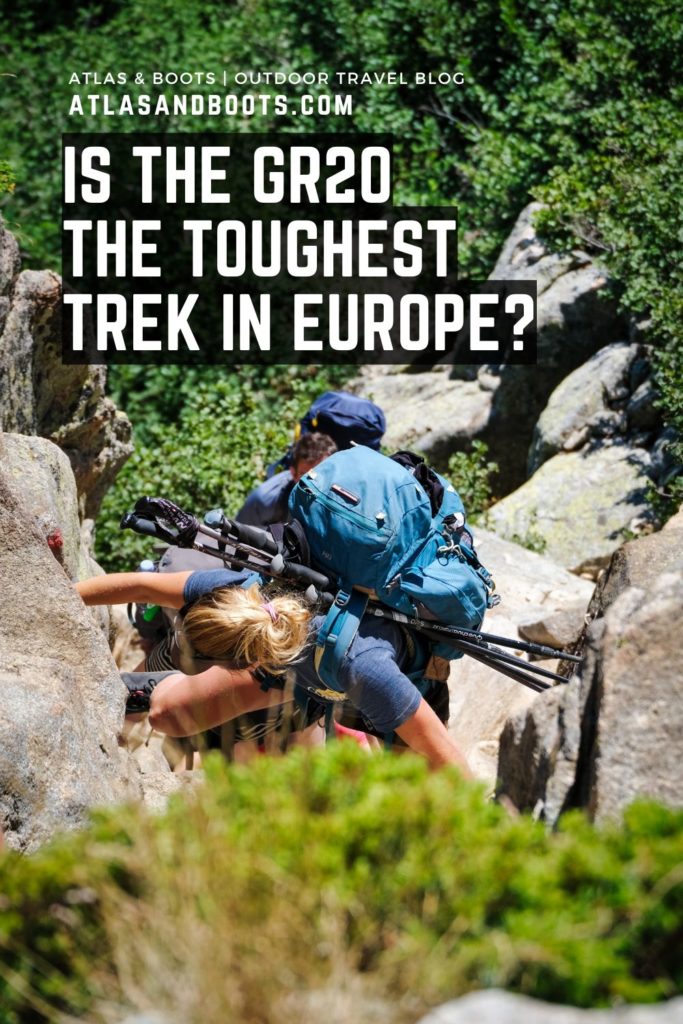Fresh from my return from the Mediterranean island of Corsica, I examine whether the GR20 really is the toughest trek in Europe
There’s no question. The GR20 in Corsica is a challenge. It requires early starts, long days and hiking along exposed, steep and technical terrain, but the rewards are myriad: sweeping views over jagged peaks and deep valleys, serene swims in natural pools, the thrill of navigating rugged alpine passes, and the deep satisfaction of completing a legendary trek.
Corsica’s infamous GR20 trail takes hikers the length of the Mediterranean island and is renowned for its difficulty and requiring a high level of fitness. As such, the Grande Randonnée 20 is often hailed as Europe’s toughest trek.
I just returned from trekking the northern section with Much Better Adventures, and can confirm that there are many hardships to be endured on the GR20.
That said, there are also creature comforts to be found that you wouldn’t find on many other European routes. For starters, hot showers, cold beer and warm croissants certainly make trail life more bearable!
With that in mind, I ask, is the GR20 the toughest trek in Europe?
What is the GR20 trek?
Location: Corsica, France
Distance: 180 km (110 mi)
Duration: 14-16 days
Ascent/descent: ~12,000m
Start-finish: Calenzana/Conca
Mention the island of Corsica to someone, and they will likely think of glittering yacht-filled bays, sweeping sandy beaches, and medieval citadels perched atop rocky headlands. And maybe Napoleon.
But inland, where the four main massifs of Cinto, Retondo, Incudine-Bavella and Renoso rise, you’ll find little in the way of civilisation. Instead, sheer granite peaks tower dramatically above crystal-clear streams, emerald lakes glint in the sun, and breathtaking mountain vistas stretch in every direction towards the Mediterranean.
Running roughly north-south across the island, the trek begins at Calenzana and ends at its southeast terminus in Conca. Traversing the spine of the island, the GR20 winds through a range of topography, including wild mountain ranges, alpine meadows and deep forested valleys.
What makes the GR20 so tough?
While it may not be the longest, highest or most remote, the terrain is what really stands the GR20 apart. Geologically speaking, the mountains of Corsica are the far southwestern tip of the mainland European Alps.
Formed from the same mountain-building forces that created some of Europe’s highest peaks, Corsica’s ridges and cliffs share the same ancient rocks. Millions of years ago, the island was connected to the mainland before it drifted to its current position, creating the most mountainous island in the Mediterranean, hence its moniker as the ‘mountain in the sea’.
The result is terrifically hard granite underfoot, which rarely produces more than a few meters of flat path. Hikers tackle relentless ascents and descents that seem to go straight up or down, crossing knife-edge ridges, scrambling over boulder fields and navigating sections where steel cables and chains are bolted to the rock.
Unlike mainland mountain routes, there are few gentle valleys to be found along the GR20 – just plunging gorges, wind-scoured plateaus and high passes where snow can linger even into summer. There are regularly challenging scrambles – technically and physically – throughout the route. During our trek, there was at least one scramble to overcome every day.
The weather, too, can be capricious. Often, the Mediterranean sun beats down, while sudden storms can sweep in without warning, making some parts a real test of endurance. The first day of our trek was just that, with rainstorms, thunder and lightning and low cloud cover, broken by periods of glorious sunshine, only for the rain to arrive again in the afternoon.
The trek also requires early starts and long days. On two out of our six days on the trail, we were up at four in the morning and on the trail by five. Partly this was to break the back of the distance before the heat of the day arrived, but mainly it was just because the days could involve up to 12 hours of trekking. The latest we were up was six!
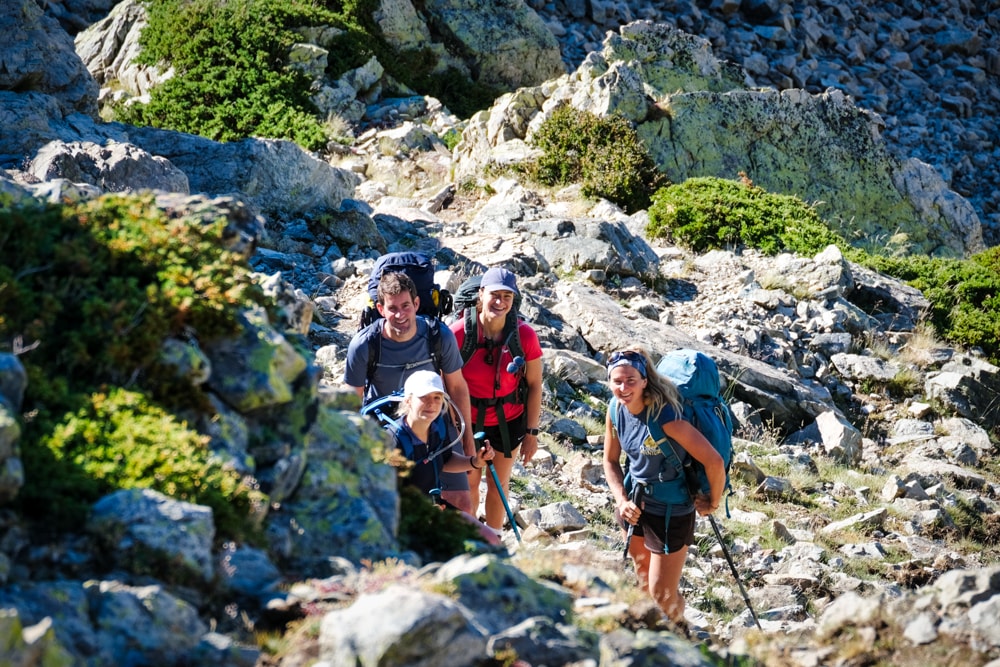
Other than the first day, we had relentless sunshine for the rest of our trek. Temperatures regularly pass 30°C, but when the sun is at its highest and reflecting off the granite cliffs and boulders, the heat can become completely enervating, and there is often little shade to be found.
Finally, the dropout rate on the GR20 is reportedly much higher than on other Grande Randonnées. There is a statistic doing the rounds online that in 2017, approximately 15,000 walkers attempted the trek, with a dropout rate of about 40% although I couldn’t find a reliable source for this.
Regardless, our guide repeatedly told us that she had never had a group that didn’t have at least one person drop out, and ours was the same. Unfortunately, one team member had to give the final day a miss after developing severe blisters on their feet. The point is the GR20 is attritonal.
On the plus side…
Having said all of that, the GR20 does have several creature comforts that you rarely find on more remote treks. The accommodation is among some of the most comfortable I’ve found on any trail, anywhere in the world. For starters, there is accommodation, so you don’t have to carry a tent.
And the options are pretty varied. The mountain refuges all have camping areas with pre-pitched tents and camping pads available to rent. There are also covered areas for cooking and drying clothes.
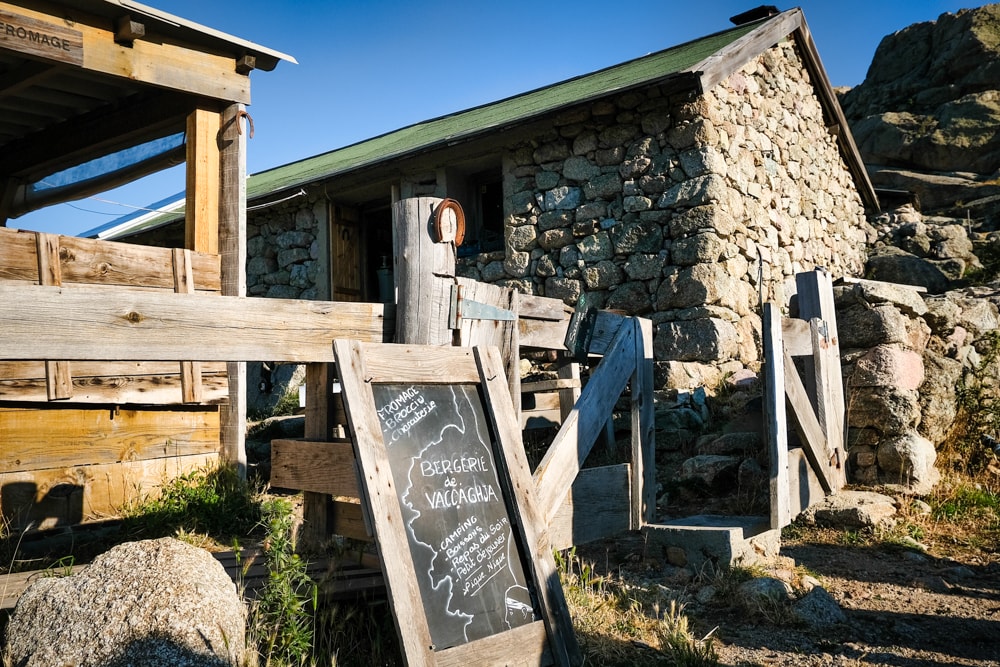
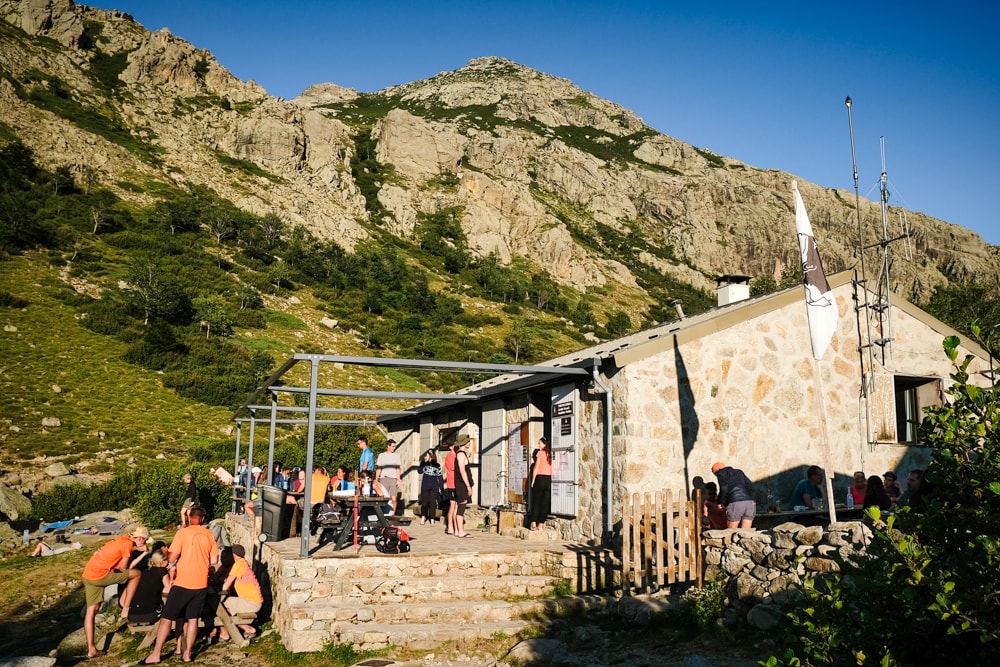

Atlas & Boots
Accommodation is pretty cosy along the GR20
Refuges also have dining areas serving simple but hearty meals, cold and hot drinks, as well as alcoholic drinks, including wine and beer. Most of the refuges also have shared bunkrooms available to sleep in, and hot showers and electricity, although these sometimes incur an additional cost.
Other sleeping options along the trail include hostels, hotels and ski lodges, all of which are a step up in terms of comfort from the refuges. In this respect, the GR20 is arguably more comfortable than teahouse trekking in Nepal.
Is the GR20 the toughest trek in Europe?
It’s almost impossible to say for sure if the GR20 is the toughest trek in Europe without having completed every trail, but in terms of terrain, it is probably the toughest trek I’ve undertaken. I have completed treks which have been just as technically challenging or physically demanding, but have been shorter overall or had smaller daily distances.
I have also hiked longer trails, with fewer creature comforts en route, but they have not been as relentlessly demanding underfoot or had as much technically challenging terrain.
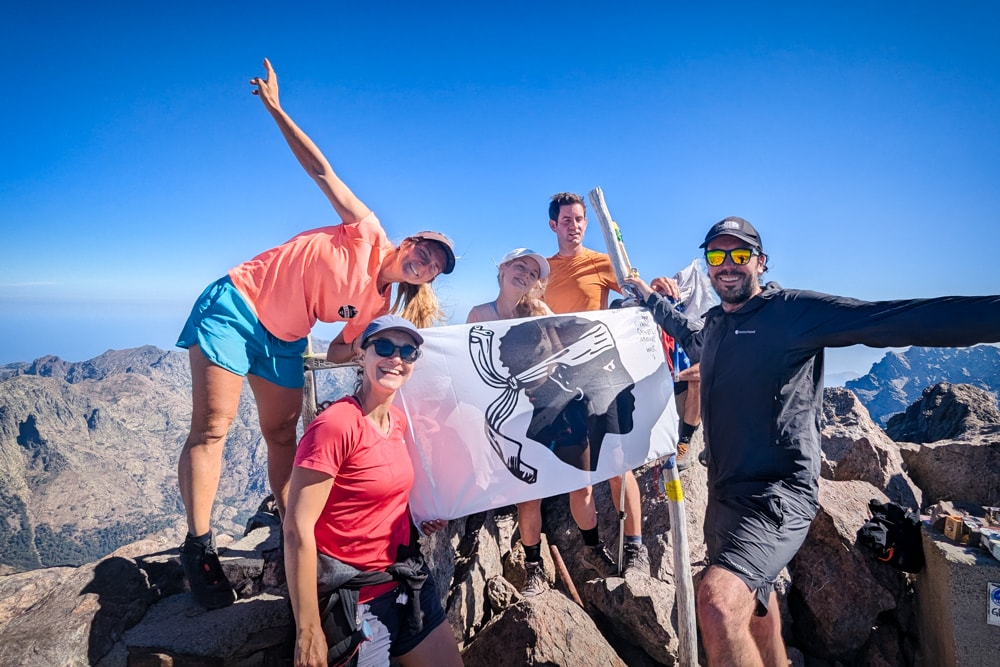
Other contenders could be the Nordkalottruta, running along the borders of Norway, Sweden and Finland; the remote Kungsleden, primarily located in Lapland above the Arctic Circle; the Skye Trail in Scotland, probably the UK’s toughest trek; the Peaks of the Balkans Trail, traversing the mountainous border regions of Albania, Kosovo and Montenegro; or the Haute Route, the classic mountaineers’ route, running between Chamonix in France, and the Matterhorn, in Zermatt, Switzerland. All could claim to be the toughest trek in Europe.
Monikers aside, whether you’re an experienced mountaineer or trekker seeking the next challenge or an adventurous soul drawn to nature’s extremes, the GR20 promises a journey that is as rewarding as it is relentless.
Enjoyed this post? pin it for later…
